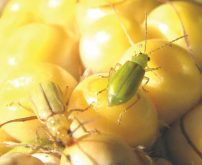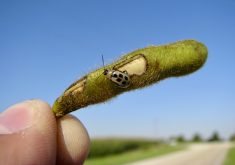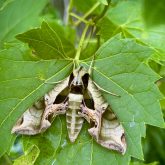Two significant insect pest problems have occurred this year, both stemming in part from building resistance to controls.
Corn rootworm tops the list, according to Tracey Baute, field crop entomologist for the Ontario Ministry of Agriculture, Food and Rural Affairs (OMAFRA).
Why it matters: Grain growers have limited tools to address spider mites and corn rootworm. Striving to reduce the pests’ opportunity to develop resistance to those tools is critical.
Read Also

Winter cereals beyond wheat gaining traction
Winter cereals such other than wheat, such as barley, could provide better yield and rotation options for Ontario growers.
Baute told Farmtario that a lack of active corn rotation is all too common, promoting corn rootworm resistant to Bt hybrids. Some growers with higher resistant populations are relying on RNAi sprays, often on top of the same hybrids that spurred higher resistance pressures in the first place.
In doing so, they are relying on a single mode of action, likely building resistance to Bt hybrids and RNAi controls.
“The biggest, most effective tool is rotation for even one year, so we don’t have to keep moving to different tools every year,” says Baute.
“Rotation is not always simple, that’s the problem, but it is most effective at wiping the rootworm population out so you can use a variety of different tools over the next three years, and not keep exposing the rootworm to the same modes of action.”
Higher corn rootworm pressure results in poorer silage quality, potentially requiring producers to buy additional feed.
“Rotating means you don’t have to use rootworm hybrids the first, maybe even the second year. That is the more sustainable practice. We would see a big difference if growers thought ahead…There really are no other rootworm solutions coming down the pipeline,” says Baute.
Spider mites soak up dry conditions
It’s been a reasonably good year for spider mites too – for the mites, anyway.
Increased rainfall, heavy dews and cooler nights have applied pressure on spider mite populations in most of the province. In drier areas, such as central Ontario and Norfolk county, there are fewer predatory pathogens, which has allowed spider mites to reach concerning levels.
Higher pest populations lead to greater insecticide and miticide application. Though necessary, Baute is concerned at the level of resistance the pest is developing for Cygon and Lagon, the only economical chemical controls available to broad-acreage growers.
Other chemistries from the horticulture sector are available, but per-acre costs are prohibitive for broad acre use.
“We’re in a difficult period where we’re almost holding our breath, hoping we don’t have too many hot dry years and mite problems,” she says. “We were lucky some rains came through that didn’t make every field a problem.”
A little of this, a little of that
Other pests have been noted too.
As in 2021, aphids are a problem for much of Eastern Ontario. The region’s multi-year aphid problem is surprising, says Baute, noting a general absence of beneficial insects is odd. The impact of weather on development of aphid-attacking pathogens may be an additional factor.
Regardless, the need to spray for aphids two or three times a season is not normal, but a reality for some soybean growers.
Western bean cutworm has not been an issue. Baute expects a fair amount of preventive spraying has occurred, and said she hopes applicators managed to time it well.
As Ontario inches closer to harvest, she reminds growers to keep harvest interval requirements in mind.















